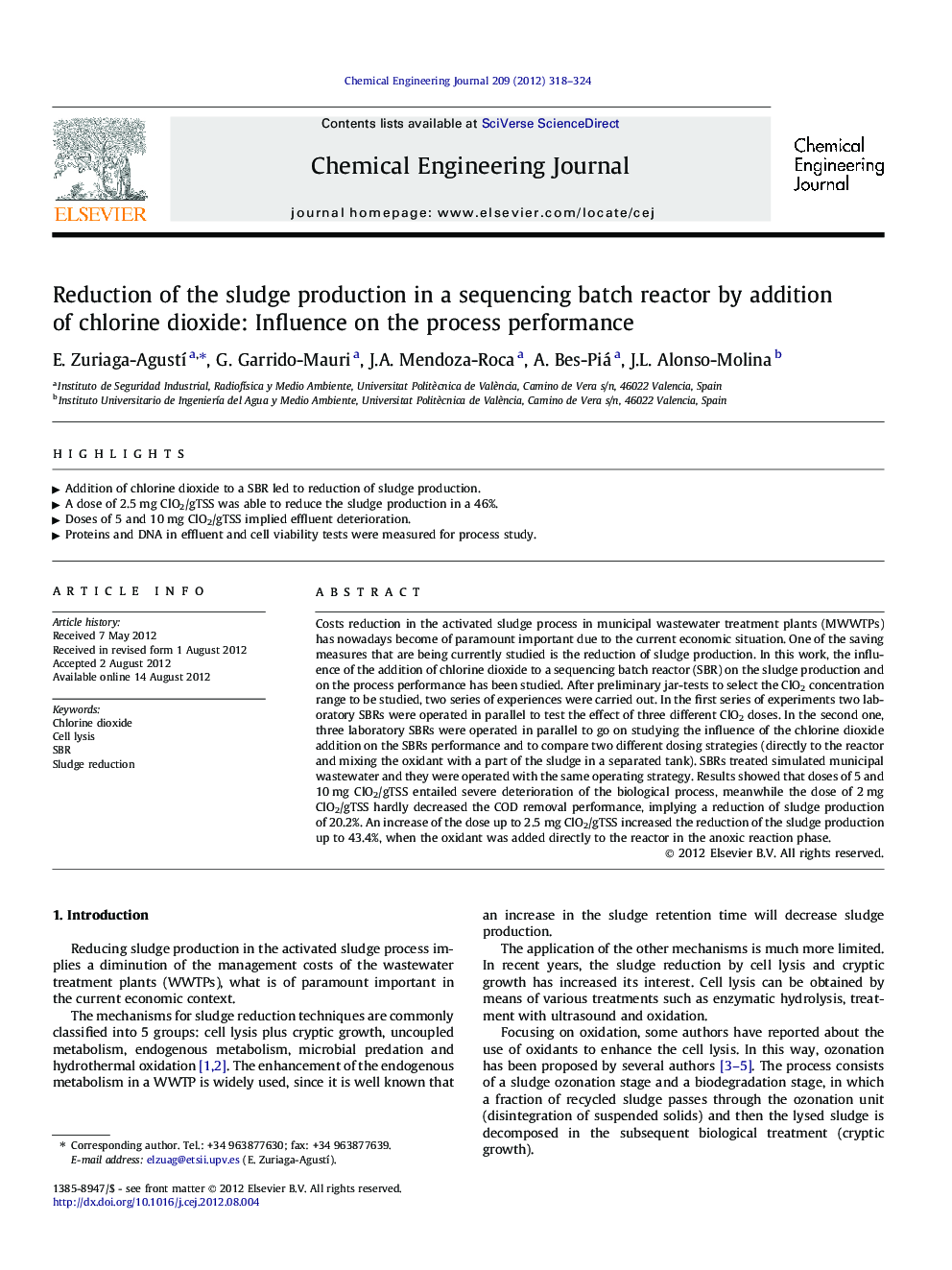| کد مقاله | کد نشریه | سال انتشار | مقاله انگلیسی | نسخه تمام متن |
|---|---|---|---|---|
| 149209 | 456429 | 2012 | 7 صفحه PDF | دانلود رایگان |

Costs reduction in the activated sludge process in municipal wastewater treatment plants (MWWTPs) has nowadays become of paramount important due to the current economic situation. One of the saving measures that are being currently studied is the reduction of sludge production. In this work, the influence of the addition of chlorine dioxide to a sequencing batch reactor (SBR) on the sludge production and on the process performance has been studied. After preliminary jar-tests to select the ClO2 concentration range to be studied, two series of experiences were carried out. In the first series of experiments two laboratory SBRs were operated in parallel to test the effect of three different ClO2 doses. In the second one, three laboratory SBRs were operated in parallel to go on studying the influence of the chlorine dioxide addition on the SBRs performance and to compare two different dosing strategies (directly to the reactor and mixing the oxidant with a part of the sludge in a separated tank). SBRs treated simulated municipal wastewater and they were operated with the same operating strategy. Results showed that doses of 5 and 10 mg ClO2/gTSS entailed severe deterioration of the biological process, meanwhile the dose of 2 mg ClO2/gTSS hardly decreased the COD removal performance, implying a reduction of sludge production of 20.2%. An increase of the dose up to 2.5 mg ClO2/gTSS increased the reduction of the sludge production up to 43.4%, when the oxidant was added directly to the reactor in the anoxic reaction phase.
► Addition of chlorine dioxide to a SBR led to reduction of sludge production.
► A dose of 2.5 mg ClO2/gTSS was able to reduce the sludge production in a 46%.
► Doses of 5 and 10 mg ClO2/gTSS implied effluent deterioration.
► Proteins and DNA in effluent and cell viability tests were measured for process study.
Journal: Chemical Engineering Journal - Volume 209, 15 October 2012, Pages 318–324